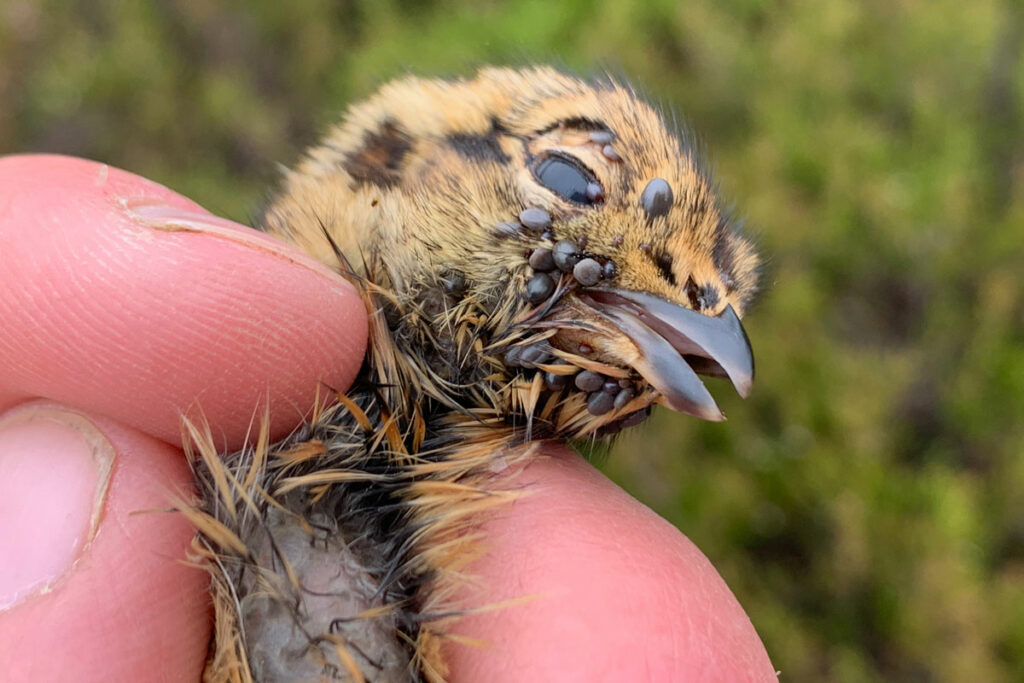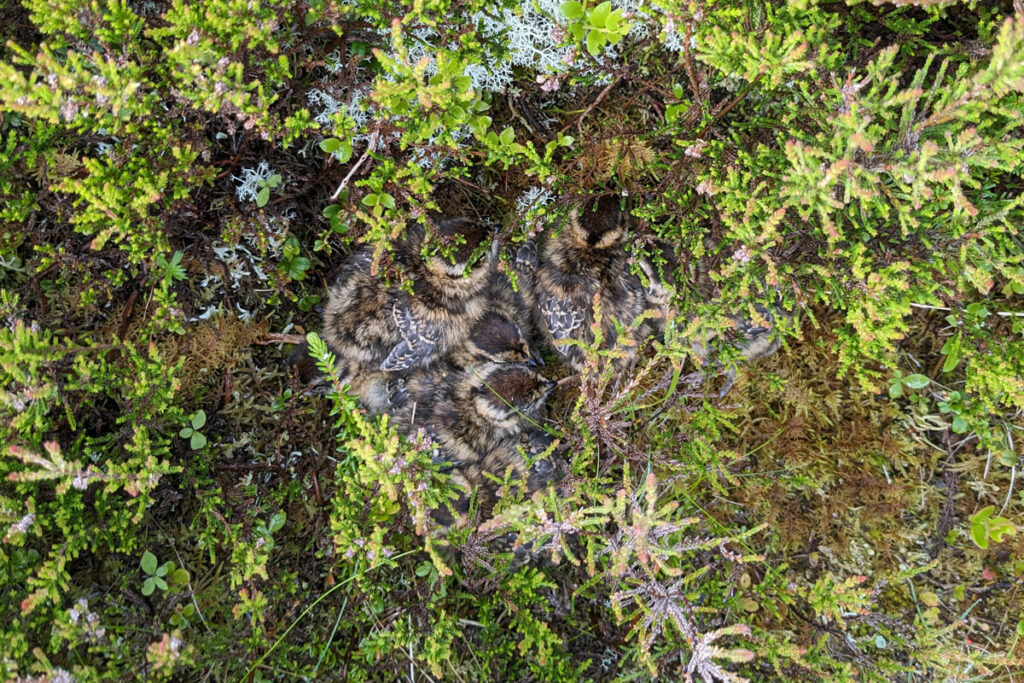By Dr Felix Meister, Advisor Scotland
During the last week of May and the first week of June, GWCT staff were active across Scotland assessing tick burdens on red grouse chicks. This was the third year of surveys within a five-year research project that aims to determine the relationship between mountain hare densities and red grouse tick burdens.

Surveys need to take place in the brief period when chicks are mobile enough to potentially pick up ticks but before they can fly and evade capture. Given regional and year-on-year variation in hatch dates, the logistics of planning more than 20 site visits within this time window can be daunting. Scottish weather in early summer can also hamper us, as we avoid catching and handling chicks during inclement weather to minimise disturbance.
This year, we managed to survey 20 sites spread across Angus, Dee/Donside, Highlands as well as Moray and Nairn. Overall, we located 182 red grouse broods and a total of 656 chicks. When processing broods, we do not necessarily need to find and examine every chick so long as we manage to capture a representative sample.
Of the 182 broods of mobile chicks, 26 broods (14%) were completely tick-free. This is similar to 2023, when 12% of broods were tick-free, but less than 2022, when 25% of broods were without tick. On broods with ticks, we counted a total of 4,887 ticks (larvae and nymphs combined). Mean tick burdens per site ranged from 0.2 to 36.9 ticks per chick. A preliminary look at the data suggests that this is similar to 2023 but almost twice as high as in 2022, although the final analysis is still pending. The highest individual tick burden was 186 (183 larvae, 3 nymphs) on a chick weighing 25 grams.

High tick burdens are problematic for grouse chicks, as they can cause anaemia and bite wounds can cause lesions in the skin, which can lead to infections, especially when chicks scratch the irritated skin. Moreover, tick nymphs may carry the louping ill virus, which is associated with a high mortality rate in grouse chicks.
In Scotland, NatureScot General Licence 04/2024 stipulates that ‘red grouse must not be taken […] between 16 April and 31 July.’ For our research project, we operate under a specific disturbance licence granted by NatureScot. GWCT Scottish Advisory are currently preparing a separate licence application to offer tick surveys to Scottish estates outwith this particular research project, so that site-specific tick levels may inform management decisions such as sheep grazing regimes and acaricide treatment. Land managers interested in this kind of service are encouraged to get in touch before January 2025 surveys at scottishadvisory@gwct.org.uk.